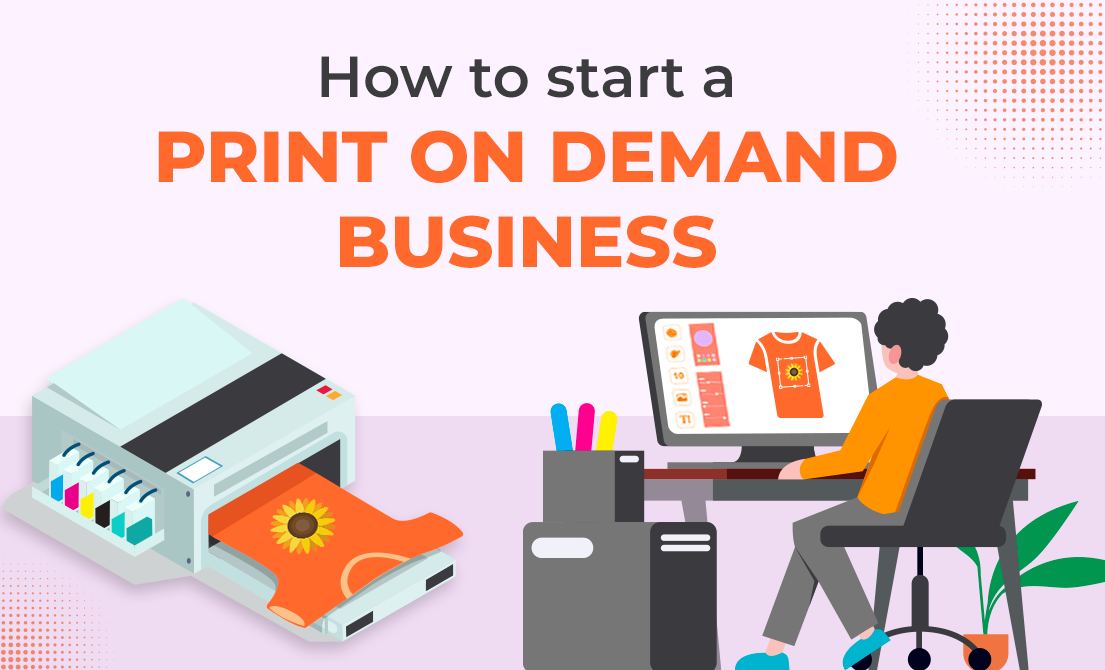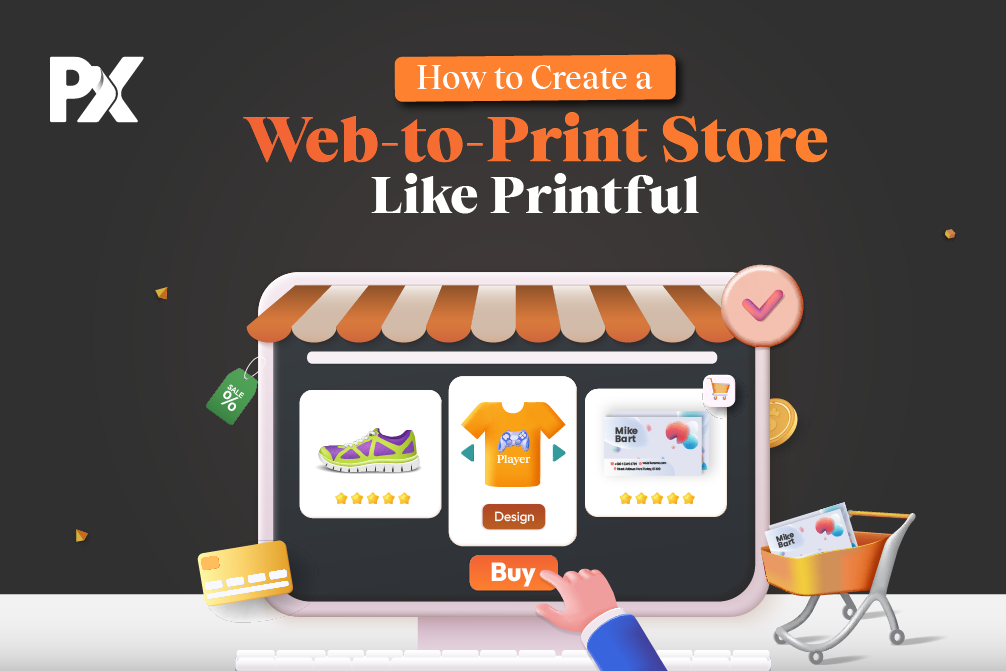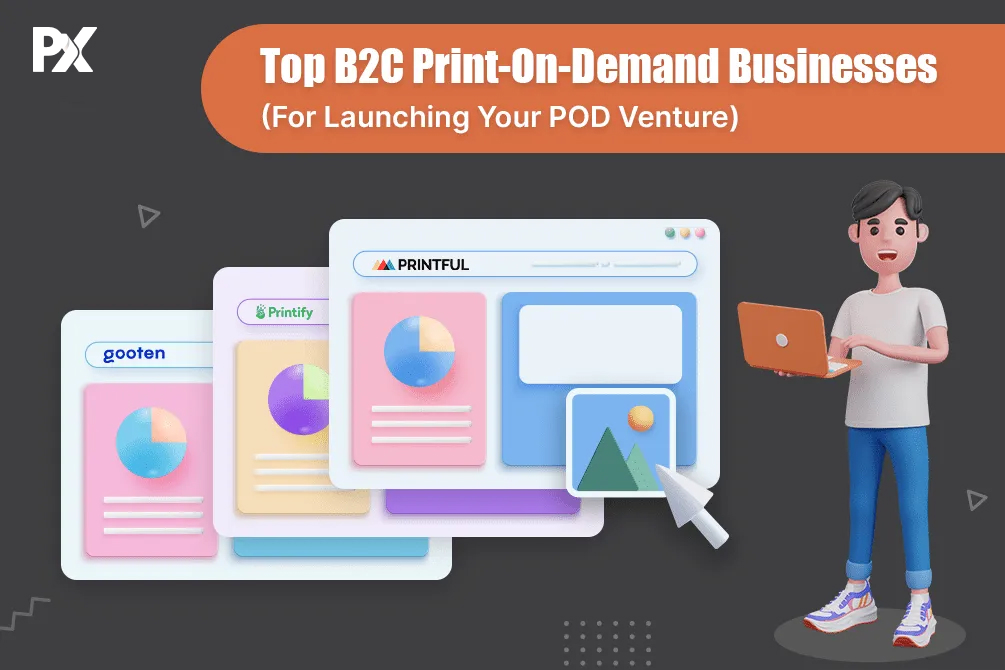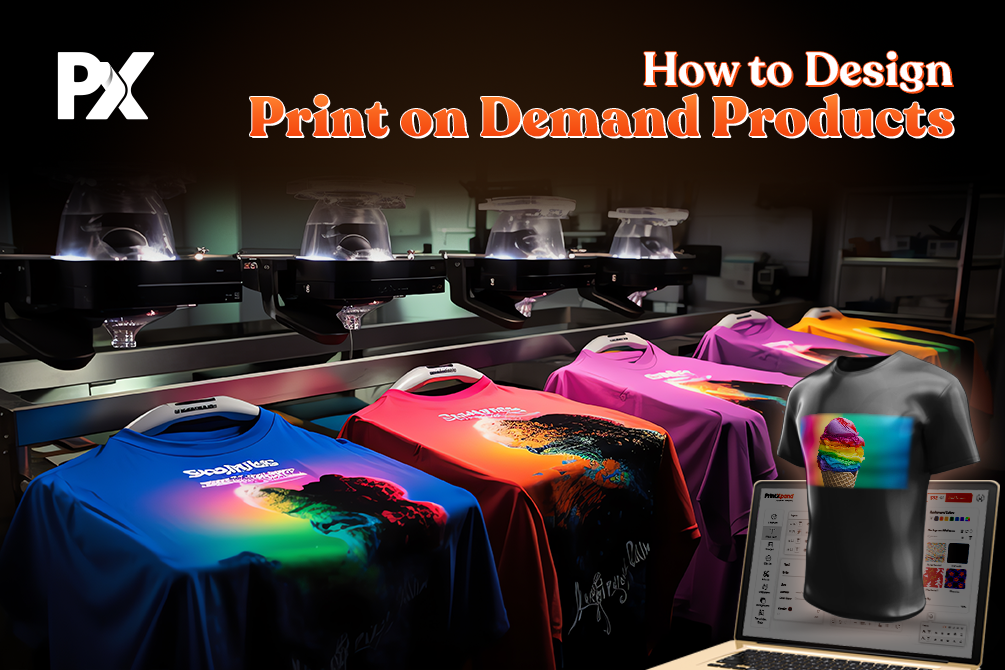- Summary
- Numbers you must know before you start print-on-demand business
- Chapter 1: Setting up your business
- Chapter 2: Choosing What to Sell
- Chapter 3: Shipping & Product Price
- Chapter 4: Marketing and Promotions
- Chapter 5: Scaling Your Business
- Conclusion
- Advantages of starting a print on demand business
Summary
Thousands of people search terms like “how to start a print-on-demand business” every month. This clearly shows the interest of entrepreneurs in exploring this industry and making an income out of it.
Print on demand industry is something that requires less investment compared to other industries. There are no extra efforts in managing orders and deliveries.
Even though it is pretty easy to start a print-on-demand business, you must analyze the market, product, and everything that will make your business profitable.
You don’t want to get lost in a huge billion-dollar market.
We are here to share with you all the information you need to start a print-on-demand business.
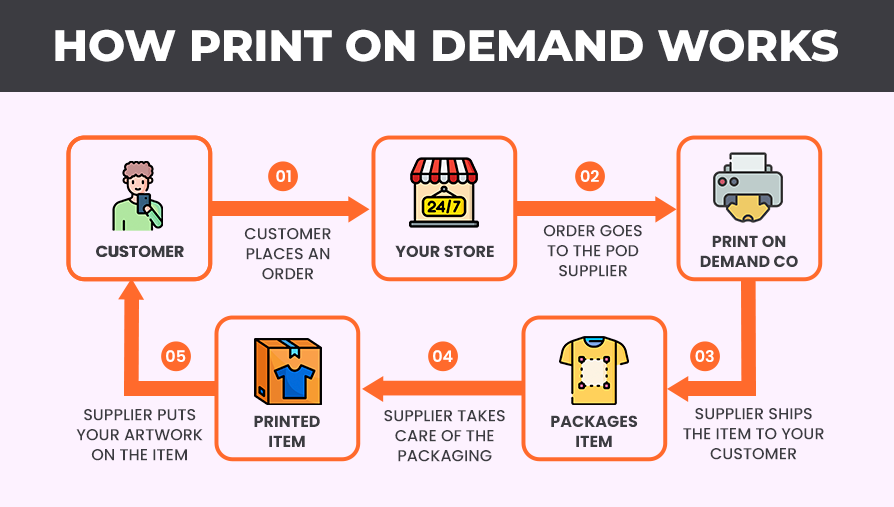
Numbers you must know before you start print-on-demand business
Global print-on-demand market: In 2021, the global print-on-demand market was valued at USD 4.90 billion and is expected to expand at a CAGR of 26.1% from 2022 to 2030.
US print-on-demand market: In 2021, the US print-on-demand market was USD 1.5 billion and is expected to expand at a CAGR of 24.7% from 2022 to 2030
Global Commercial Printing Market: In 2021, the global commercial printing market was valued at USD 433.79 billion in 2021 and is expected to be worth USD 484.22 billion by 2027 with a CAGR of 1.74% during 2022 – 2027.
Chapter 1: Setting up your business
Choosing a profitable niche
There is no way you can serve all kinds of audiences with your products. With no specific target audience, there won’t be any brand USP.
So, when you start a print-on-demand business, the first thing to focus on is Finalizing a niche. If you already have one in mind, then you are halfway through.
There are two ways to find your niche:
1. Product Niche
A product niche means you have to focus on a particular type of product you will be selling. For example, you can decide on selling t-shirts or mobile covers. In this case, you sell only t-shirts or mobile covers with different designs. So, each time, you need to be innovative with your designs and set up product designs in your store
2. Subject Niche
This niche allows you to be experimental. Here, you can find a trendy subject like “Women empowerment” or “how to be happy” and then create a range of products around that niche. It will be like a theme of your business. This way, you can include everything from t-shirts, pillowcases, bags, etc. The only difference is you get to offer a number of products with innovative designs.
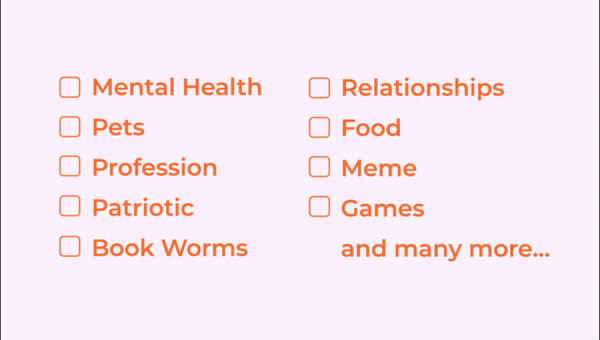
For the ones trying to find one, we have a few options for you. Some of the niches given below are still broad. For example, pets. You can choose dogs, cats, rabbits, or any other and make it more specific.
The niche you choose must interest you as you have to deal with everything else around that only. Try gaining as much information as you can.
Take the help of tools like Google Trends, Semrush, and Ahrefs, to figure out what your targeted niche is looking for, what products are trending, whether there are any products whose attention span is increasing, detailed research of direct competitors, etc.
The point of doing this is to find a niche that can bring you profits. All this research will definitely be something that can upscale your business.
Setting up an online store
The next thing on the list is to set up your web store. For that, you will need to make some investments.
If you are starting from scratch and hold no inventories of your own, you will need this to start a print-on-demand store:
- Website
- Product Designer Tool
- ERP Software
Rather than investing at three different places, we have an all-in-one solution for you you i.e., PrintXpand One – Web to Print solutions. We will set up a storefront for you, give you a product designer tool, and printing ERP software, thus taking care of all the necessary requirements.
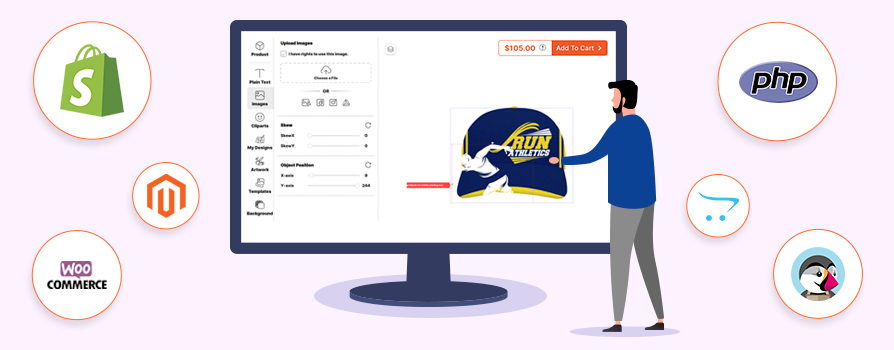
But in case you already have a web store, irrespective of the technology (Magento, WooCommerce, Shopify, BigCommerce, PHP, Prestashop, or OpenCart), we can still integrate our product designer tool with your store with our custom API. With minimal effort, you will have a web to print storefront in a few days.
Registering your business and obtaining necessary licenses
Now that you know how to set up a web-to-print store, it is time to make your store legal!
Depending on the state, country, or province you live in, figure out the official documentation that needs to be done from your end to avoid any problems in the future.

Source: Giphy
Most countries have guidelines available on government official websites. Go through those so you know what you should do and, most importantly, what not to do!
Finding a supplier or printing service
By the time your license and documentation process is on, start looking for printing services. Don’t restrict your choice of suppliers to be in the same state as you. If you want to quicken the shipping process, having suppliers at multiple places will help you distribute faster.
Our ERP software is specially designed to manage orders and suppliers so that you don’t have to manually handle the order-assigning process. Managing orders becomes much easier with it.

Source: Giphy
When you talk with any suppliers, there are a few things you should consider:
- Printing and product price (static or variable based on the number of orders)
- Shipping standards
- Quality of products they use
- Customer service in case you have queries
- Review their work and working ethics closely
We have listed below some of the great print on demand services you can choose from:
1. Printful
Printful, one of the best platforms for print-on-demand services, is known for its easy to use interface and process. Once you are set up with your store, you can simply sign up with Printful (free of cost) and connect your store. It’s that easy.
They handle your printing, packing, and labeling and will also ship the products to your customers under your label. Basically, your major cost would be for marketing, and Printful bears the rest of the costs.
Once a customer orders your product, only then they charge you. You set the price, Printful charges you for printing and fulfillment, and the remaining is your profit. You can check out their products and pricing to understand their base price.
It integrates with multiple ecommerce platforms like Shopify, WooCommerce, Prestashop, Weebly, etc.
2. Printify
Printify is one of its kind print-on-demand service providers with over 850 products on which you can print. They have a wide network of vendors worldwide, which enables them to have such a variety of products.
With Printful, you don’t have to pay any price, but Printify has a nominal cost of $24.99 for its premium package, which includes 20% off on all the products. If you are a business looking to expand, Printify is the best option.
Printify also integrates with top ecommerce platforms like Shopify, Etsy, and WooCommerce.
3. Zazzle
Unlike Printful, Zazzle is a marketplace where you can easily sign up as a designer and start selling your products. They have millions of visitors each month to their store, which can benefit you if you are just starting out.
They follow an easy process. You create a Zazzle account, open a designer store for free with a unique name then upload your designs and artwork on their products. Finally, when a customer buys it, Zazzle will handle all the printing, packaging, shipping, etc., in the order fulfillment. And at the end, you get a certain percentage of the sale as agreed upon during the signup.
Here’s how they calculate the price of your products for the Zazzle marketplace: Product Base Price + Your Royalty Percentage = Retail Price. And the best part is that they let you set your royalty price. You can ask for whatever you want, but I suggest keeping their audience and purchasing power in mind.
4. Merch Amazon
You also have Amazon, which lets you upload your designs and sell them to their humongous customer base. They have quite a simple procedure that you can follow. You will need to upload designs, select the product type & color, and add a product description, and they will do the rest – from creating a product page to handling production, shipping, customer service, etc. Just like with Zazzle, you will be in charge of the pricing part at Merch Amazon.
Chapter 2: Choosing What to Sell
Now it is time to narrow down your products that fit your niche. You can obviously sell multiple products at a time, but you need products that are right for your target audience.
Today, everything is customizable, like everything. People are obsessed with their name, face, pets, food, or anything on the products that they use daily!
We have a few suggestions on what products you can choose to start a print-on-demand business.
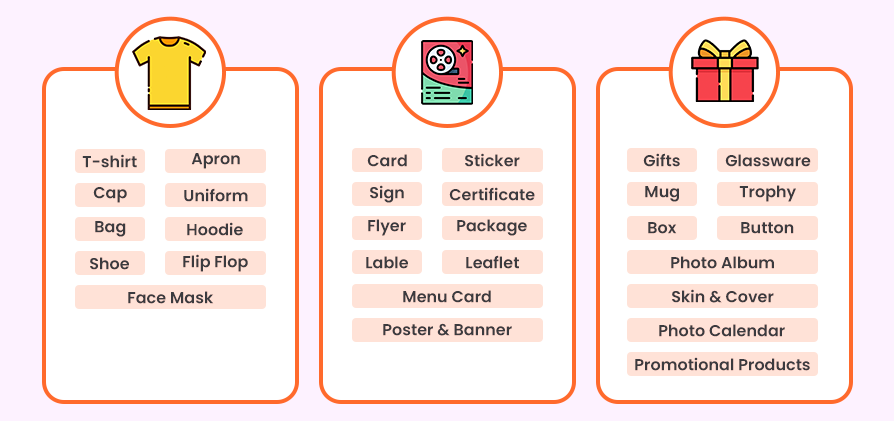
This suggestion covers the most profitable and popular markets, i.e., Apparel and wearables, commercial products for branding and promotion, and most trending gifting products.
Figure out what products go with your niche and designs that your customers can create with the designer tool.
If you have something that you feel is different and less talked about, ask your target audience on social media platforms. See what their view on this is.
Deep dive while researching about products, take as many suggestions as you can, especially from your target audience, and try to understand the market size. It will give you some idea of how far you can go and how much profitable it will be for you to start a print-on-demand business.
Also read: 10 St. Patrick’s Themed Custom Products For Your ECommerce Business
Once you have everything ready in place, it is time to prepare product designs and start uploading them to your e-store. The first part is to get your print-on-demand designs ready. If you have ideas, you can start preparing. If you are not that good at this part, you can also hire external help. Exploring Pinterest and Reddit would also help you with some inspiration.
However, in both scenarios, you have to create designs yourself. But what if your created designs don’t do well as per your expectations? Additionally, if you hire external help, there are chances of back and forth if the created designs are not as per your expectations.
As a solution, you can take it a step further and opt for a product designer tool. It is not a mockup generator, it is a designer tool that you can integrate with your e-store. Once you integrate it, you only need to upload blank product designs. Your customers themselves design products the way they want and place orders.
You must be wondering, what if your brand message gets diluted when different people are designing your products? However, you can easily bypass that with the right choice of tool. PrintXpand’ product designer tool includes features like readymade templates, restricting the design area. This way, you can keep products ready to a certain extent, like placing your brand logo, and then allow users to design further.
This tool increases customer engagement in your store. When you prepare designs yourself, you need to validate them with people in order to make sure that people like them enough to make a purchase. Here, the scenario is that you are giving the design part to your customer’s hand. They will create the products as per their choices. This provides them with the freedom to experiment with their creativity. Hence, your job gets easier. You receive the print-ready order files from the store and send them to your fulfillment service. They prepare the product and take care of shipping.
Chapter 3: Shipping & Product Price
Deciding the Base Product Price & Personalization Prices
When you start a print-on-demand business, an important thing to keep in mind is the product price. The retail price you decide will be the actual product price + cost of customization + shipping charges + your profit margin.
Thus, it is crucial to monitor prices closely.
For example, if you have multiple suppliers all over the country/state reduces shipping distance. This way, you can lower the shipping charges, and the final product price will reduce.

Source: Giphy
Some brands like to say they give free shipping for all their products. In this case, you have to ensure you include the shipping charges in the base price of the product, or you might end up suffering a loss.
The other thing to consider is competitors’ pricing. Customers buy after comparing prices at three different places. You don’t want to build your brand image as expensive for the same quality product that they can purchase from somewhere else.
Handling customer service and returns
If a customer returns, exchanges, or cancels the product, they will either visit your website to do the said process or contact customer service.
So you have to set up the service center to handle customer queries and inform the supplier about the issue.

Customer service is something that can make or break your business. You want to be extra careful when it comes to handling customer queries. Be available whenever your customer needs you; if not, they might never return.
So, you must keep an eye on the number of returns and the reason behind them. For instance, if more customers are complaining about the low printing quality, it is time to have a word with your supplier and fix the issue ASAP.
Whatever the issue is, try to reduce it as much as you can. No customer would enjoy receiving a damaged or wrong product after eagerly waiting for it.
Your customers don’t need to know the products are customized and sent to them by some other business and not you.
If you want your customers to come and make repeat purchases, monitor returns, communicate with your customers, give assurance that you care about them, and take necessary actions.
Chapter 4: Marketing and Promotions
Developing a marketing strategy
If you want people to find your store or products, marketing and promotions are unavoidable. As the margins in this industry are less, it is hard to spend a big chunk of money on paid promotions.
But you have to start from somewhere. A pocket-friendly and almost free option is taking photos and making fun videos with your products.
In the era of Reels, people love watching funny, interactive, and knowledgeable content but in 30 seconds. So sharing short videos can be beneficial. Make your brand pages on all social media platforms and try to mix with your target audience.
Many trends from the past are back in 2023, and so is the barter system from 6000 BC. You can give your products to influencers for free and ask them to make a video using those products and mentioning the brand name.
As they already have a certain number of followers, your product would directly reach a huge audience. So utilizing social media at its max and influencer marketing is a must to include in your marketing strategy. Improve your sites metrics with using SEO link building strategies as this has proven to be a steady and long lasting contribution to your overall site traffic and authority.
Based on your offerings, see which platform is most familiar with your audience and go with that. You can follow these tips to make your social media game strong:
- Stay active and post regular content that interests your audience. For social media, your approach should be 80% about delivering content and 20% about promoting your business.
- You can create a hashtag and urge the audience to use it maximum. Another critical point is to communicate with your audience.
- With Print on demand business, influencer marketing can work wonders. Reach out to influencers and make collaborative content that brings value to your store.
- Join community groups and stay active within those communities.
Website Optimization:
SEO remains an essential part of keeping your business afloat. It is all about optimizing your website as per Google’s guidelines to maintain higher rankings. It would help you fetch targeted audiences to your website. Make sure to target the right keywords and learn how to avoid keyword stuffing to keep your technical game right.
Today, content is everything. Hence, make sure to keep your content game right. Write on topics that are helpful for your audience. This way, you not only help your audience but also set your name as one reputed brand in the market. It not only increases customer engagement but also inspires them to make a purchase from your website.
Launching successful marketing campaigns remains critical for your business. Apart from organic marketing, you can also try your hands on Google Ads. By investing, you will receive instant results for your store.
Running promotions and sales
The most eye-catching words are FREE and SALE!
The old and most trusted technique to boost sales, increase brand recognition, and increase business revenue is giving some discounts or giving something for free with the order.
There are some brands in their early stage that gave some of their products free, and the customers just have to pay fixed shipping. If the customer actually likes your product, they are going to come back.
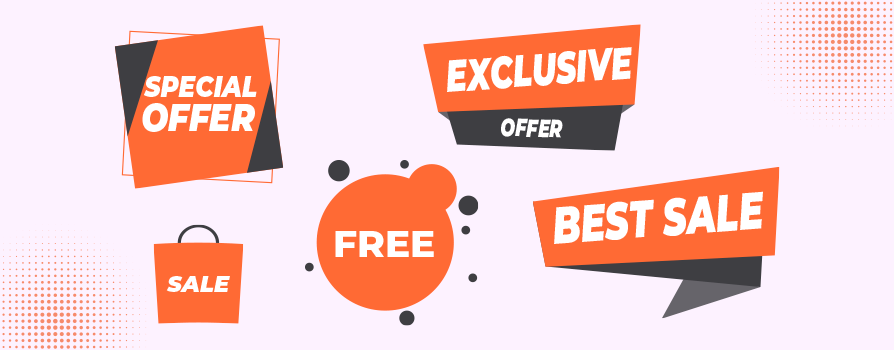
It is a sure thing that running a sale or giving goodies for free will boost your sales. Now it is on you how much discount you can afford.
Once you have that number in hand, estimate the sales number and inform the same to your supplier so that they are prepared for the boom in order numbers. You don’t want to keep your customers waiting and your supplier struggling to match up sudden hikes in order numbers.
So be prepared to see an increase in traffic after the sale announcement!
Chapter 5: Scaling Your Business
Plan to expand

Starting with a few types of products is okay. But you don’t want to stick to that only! In order to grow your business, you need new products.
Customers always want something new and interesting. After adding a new product line, you will observe an increase in sales as well. Apart from your current customers, the new product line will add a new customer base.
Ensure to maintain equality in product quality, packaging, and shipping services when you hire a new supplier. If a customer orders two different products that are prepared by two different suppliers, their packaging should be consistent.
Your customers don’t need to know you outsource your services.
Utilizing web-to-print technology
When you are paying for a product design tool, why use it for just one or two product lines? To make the best use of your investment and grow your business, keep on the market research.
Constantly look for products that you can add. Don’t forget your niche. Selling a customized laptop sleeve to kids would make no sense.
If you want to upscale your customization game, have a look at our 3D configurator. It allows customers to customize every little detail. Not many brands offer such configurations. The 3D configurator can be your brand USP as it uplifts the customization game.
Conclusion
So, are you excited to start a print-on-demand business?
Go through this blog step by step so that you don’t forget any small details. If you want to learn more about the industry, visit our blog. We write a lot about the web-to-print industry in general.
Your print-on-demand business can be profitable if done right. It has many perks for enthusiastic content creators, artists, and entrepreneurs to adopt this model and make the most out of it.
You can earn money from the comfort of your home. All you need is an internet connection to start your journey.
It is best for startups as you are not spending money on inventory, just a designer tool and website, and you are good to go!
Advantages of starting a print on demand business
- Easiest to start: The overall industry is easy to understand and so is the process. If you have some idea, you can easily build a business around it.
- Less risk: You don’t have to invest in physical infrastructure, machinery, logistics, or hire staff.
- No inventory: Once you receive the order, a third-party supplier will prepare the order, pack it, and send it to the customer. You don’t have to rent a warehouse and buy expensive printing machines.
- Expand globally: If you have designs that are unique, you can sell your products all over the globe. Understand your niche deeply, and you will find something that can be your USP.
All product and company names are trademarks™, registered® or copyright© trademarks of their respective holders. Use of them does not imply any affiliation with or endorsement by them.
FAQs
Is print-on-demand business profitable?
If you strategize every move and keep a close look at numbers, this business is extremely profitable. As you don’t have to worry about printing and shipping, you can invest that time in building your brand. Your profit depends on the number of products you sell. So, building a strong brand image is important.
How to set up an online store for customers?
First, you need to decide on the platform or the technology of your web store. Then you have to integrate the design tool with your online store. If you do not have enough knowledge about technologies and which one you should choose for your business, we recommend our web to print software solutions. It includes everything that you need i.e. a storefront, product designer tool, and ERP software to manage orders with suppliers.
Is it expensive to start a print-on-demand business?
Comparatively not! As you are not investing in a printing inventory you are saving a lot there. The only investment you need to make is to build a web store, a designer tool to design products, and an ERP software to manage order supplies with the different suppliers (optional). Apart from this, you can spend money on marketing, but you don’t necessarily have to do paid campaigns. There are many other ways to promote your product on social media platforms for free.
Is the print-on-demand market crowded?
It is not over-saturated but a growing industry. If you choose the right niche and products, have a clear vision, and a unique selling proposition, there are high chances of success. If you sell what everyone else is, then there is no point in starting a print-on-demand business.
How to promote print on demand business for free?
Paid advertising and marketing campaigns might not be on your list if you are just starting out. Well, there are so many other ways to promote your business for free.
- Make the best use of social media (video, photos, Reels)
- Optimize your store from an SEO perspective
- Use product reviews as testimonials
- Stories sell faster on the internet, so tell your brand story
- Offer discounts or free goodies to catch more eyes
